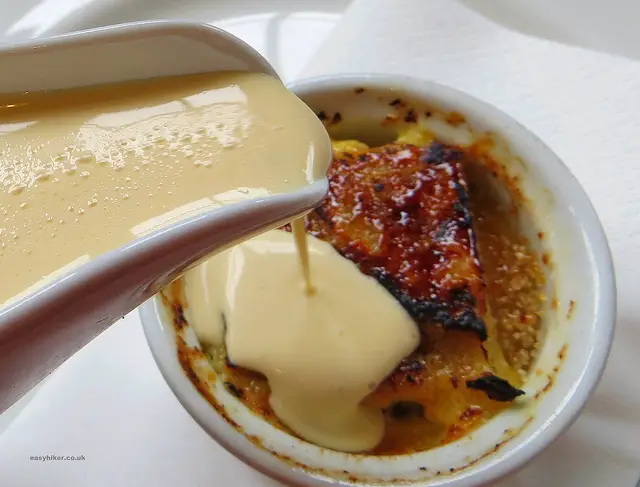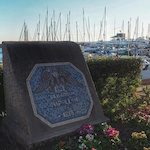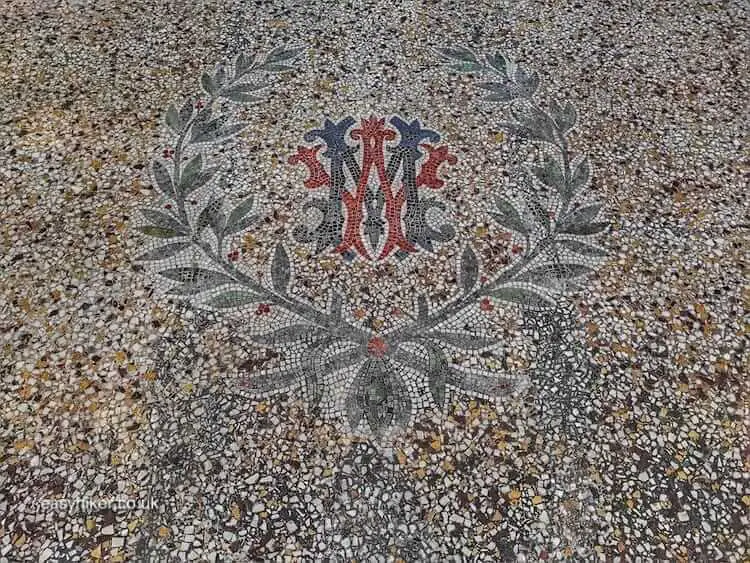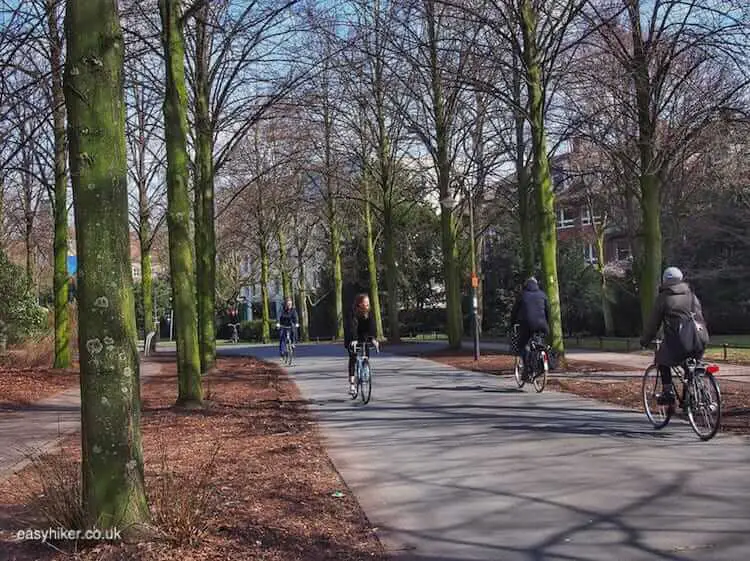Nice and Paris – the two most visited cities in France – make up an odd couple. In almost every way you look at them, they are the antithesis of each other.
Above all, the two are distinguished by the weather, of course: unpredictable and often grim in the capital, sweet and gentle on the shores of the French Riviera, but there is also the question of urban identity, specifically the question of how to deal with the past.
While modern Paris takes an integrated view, taking pride in all periods of its history in roughly even measure, Nice applies a more à la carte approach to some thorny issues of remembrance.
The opportunity of seeing how this is being done is only one reason to visit the Promenade de Paillon, the green urban walkway that serves as the city’s newest tourist attraction.

The Promenade de Paillon – built in the early 2000s and completed in 2013 – follows the course of the Paillon river (now flowing underground) that used to separate the old town from the new town, the residential quarters of the native population from the Belle Epoque splendour around the Promenade des Anglais.
For many years, the Ligurian country town of Nizza and a booming Francophone-Anglophone luxury resort co-existed side by side in a climate of mutual hostility, but eventually, New Nice triumphed over Old Nice, and the streets on the the two banks of the Paillon that once represented two different worlds today merely present two faces of the city’s tourist economy. The rethought version of the Paillon, consequently, no longer separates: it links.
There is, however, one traditional function of the river that the walkway continues to fulfil: it brings water into the town centre of Nice, if not physically then in the form of playful allusions.
Water, the central leitmotif of the walkway, is picked up by many of its elements, from drinking fountains and statues of sea animals to the grand spectacle of the Plateau des Brumes.

Before we can start our walk, I would like to clarify two things to help you gain a better understanding of the project and its history.
Firstly, I have so far called the Paillon a river, but in fact, it was more of a Mediterranean stream, carrying little or no water in the dry months of the year. (It was often jokingly referred to as “the driest part of Nice”.) But once the water did come down from the mountains, particularly when the snow on the near-by Alpine peaks melted in the warm breezes of the spring, it did so in a hurry – sometimes too much of a hurry for the bugadières, the city’s legendary washer women, who went about their trade on the banks of the Paillon.
Get to Know a Bit of the Forgotten History in Nice
More than once, the city’s washer women had to run for their lives – and needed to be rescued from river islands if there was not enough time for them to reach the safety of the dry land on either side of the stream.

I also said that the Promenade de Paillon was built in the early 2000s and completed in 2013: this is merely a half- truth. The Paillon walkway is probably best understood as a work in continuous progress, the most recent stage in a project that was started nearly 150 years ago with no firm “end point” in sight.
The first section of the river to be covered was the stretch nearest the Mediterranean coast. That happened way back in 1867 when the Place Massena was redesigned with the newly constructed Municipal Casino as its centrepiece.

It is best to begin your exploration of the Paillon walkway there, at its southern end, starting with the old-style Jardin Albert 1er and the Kiosque à Musique from 1868, one of the few surviving structures from the period.
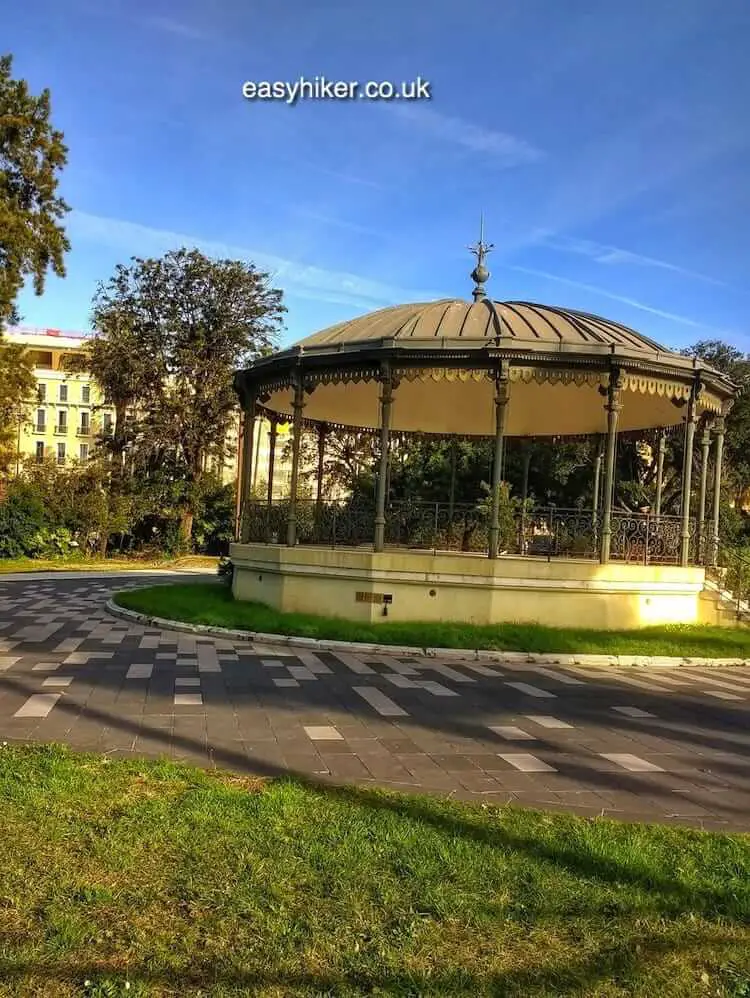
You will soon arrive at the Place Massena and its Italianate facades which can give the impression that they have stood there for centuries, steeping the Nice city centre in their shades of terracotta and red ochre.
In fact, the piazza was designed in the 1840s and redeveloped – sometimes radically so – half a dozen times since then. The Fountain of Apollo, the Greek sun god, for example, …

… was only added in 1956.
It is to the north of today’s Place Massena where the latest stage of the Paillon walkway was laid out in the first years of the 21st century, although this stretch of the Paillon (all the way to Rue Barla) had already been covered in the 1930s.
For all these years in between, however, it seemed that the municipal government was quite unsure what to do with this “reclaimed land”, using it, among other things, as the site for a notoriously ugly bus station and several parking lots.
A great deal more thought went into the layout of the new walkway. Above all, the landscape designers – so it seems – wanted to create a space for the city’s hard-working families, and as a consequence, the area was generously equipped with places where kids can have fun …

… and with benches from where their parents and grandparents can observe them – while, at this time of the year, enjoying the harbingers of spring.

For those interested in history, the walkway also offers a lesson or two in how to creatively handle thorny issues of the past.
Over the past 200 years, Nice has buried more than just the Paillon, giving a similar treatment to painful chapters like the takeover of the city by French entrepreneurs. The 19th century statue that commemorates the city’s integration into the French Republic, for example (at the southern end of the walk), shows Nice throwing itself into the embrace of the French Marianne.
The truth, meanwhile, was a little more complicated than that and involved forced closures of “irredentist” (pro-Italian) press organs and a careful orchestration of a “plebiscite” that would pass muster as a free expression of the popular will only by the standards of Vladimir Putin.

The ruins of the Acropolis Congress Centre at the far end of the walk reflect the ruthlessness that Nice can display when erasing unwanted traces of its past: the building replaced the Municipal Casino – which had never achieved a high degree of commercial success – in 1979 and went through a brief but turbulent history before it also became a victim of changing political and economic winds.
A few years ago, it was finally decided that it had to make way for an extension of the Paillon walkway.

Mayor Jacques Médecin, meanwhile, who had been for the Acropolis in Nice what Pericles had been for its Athenian namesake (and who had wanted the congress centre to become his long-lasting legacy), is remembered in the park by a scruffy patch of grass.

But maybe all of this only reflects the city’s determination to keep its eyes firmly fixed on the future rather than the past – the forgotten history in Nice.
The future, at any rate, appears to be bright for the Paillon walkway: its next extension is already under construction and beginning to take shape.
Near the end of our 45-minute-walk, in an enclosure called the Urban Forest, you can see some of the plants that will one day line the walkway – in the continuation of a project that appears to be as open-ended as the history of the city which surrounds it.



